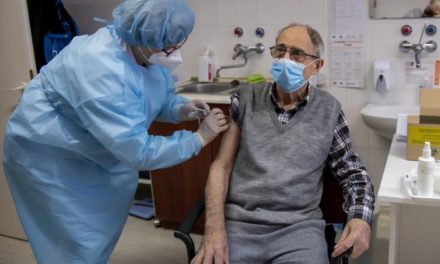According to the opposition, the Hungarian countryside is inhabited by people who are backward, uninformed, already drunk at 10 in the morning, unable to solve a crossword puzzle, i.e. the place where the mentally retarded live. The traveling exhibition, which presents the geniuses of the countryside and the most valuable and special artefacts of the rural museum institutions, clearly refutes this false and vile claim, reads Magyar Nemzet.
The theme is revolutionary, as we have never seen this representative artefact of the countryside in one place and at the same time. The first stop of the traveling exhibition is Kecskemét, the special exhibition can be viewed here until May 22. After Gyula, Debrecen, Győr, Szombathely, Szekszárd and Eger, it will finally arrive in Budapest at the end of next year. 154 historical, archaeological, ethnographic and art history artifacts from sixty-seven institutions tell visitors about the past two millennia...
…. Katalin Végh , head of the Hungarian genius program and chief curator of the exhibition, introduced the exhibition. He said that on 500 square meters, those interested can see the 154 artefacts, which were handed over by the member institutions of the Association of Rural Museums. The traveling exhibition displays the most characteristic and significant artefacts of the given settlement or museum, which represent the institution, the settlement, and its historical and cultural past. The value behind the genius was determined by the museums offering the artefact themselves.
– There were those who recommended an object based on its material value or what it had to say, and there were those who defined themselves by their very first stored artefact or by a century-old stereotype. This is how Erkel's golden wreath, the blood-soaked shirt of the victim of the 1956 salvo fire in Salgótarján, carved razors from Csorna and the onion wheelbarrow from Makó could be included in an exhibition.
A significant part of the Hungarian cultural heritage is preserved in rural museums, which is unparalleled both in terms of quantity and value. These artefacts are mostly known only to the locals, we rarely travel hundreds of kilometers for even a Mednyánszky painting or Sissi relics. In line with this idea, the Association of Hungarian Rural Museums initiated the implementation of the idea that the most representative objects of the region could be shown in a large-scale exhibition. The program is implemented in the framework of the Petőfi 200 commemorative year, with HUF 3.5 billion government support, which is coordinated by the Association of Hungarian Rural Museums. The organization works for the social recognition of rural museology, the professional modernization and renewal of rural museums...
...At the opening of the exhibition Szilárd Demeter , chairman of the board of trustees of the Hungarian genius program, director general of the Petőfi Literary Museum, ministerial commissioner, launched the program.
"We have many museums, but we have one heritage." This heritage is multi-faceted, multi-colored.
He said that if we accept that our heritage gives depth and support to the present, then we must also accept that Hungarian culture in the broadest sense does not recognize current national borders.
- We have been living in the Carpathian basin for at least a thousand years, but only a hundred years ago, brother was separated from brother, our country was mutilated, and our heritage was given to those who did not take care of it as their own. Two tasks follow from this: one is that, guided by our thousand-year responsibility, we protect our heritage even if it is not formally, property-legally owned by us. Even if they don't thank us. And we have to do this because in today's turbulent times we have come to realize, the nations of Central and Eastern Europe have come to realize that our heritage is a common heritage. To understand the world based on the same cultural codes, as far as we can understand the increasingly insane Western civilization …
... The Hungarian Genius traveling exhibition is supported by the National Cultural Fund.
Source: Magyar Nemzet/Adrienn Bényei
The full article can be read here.
(Cover photo: Miklós Tekős)












